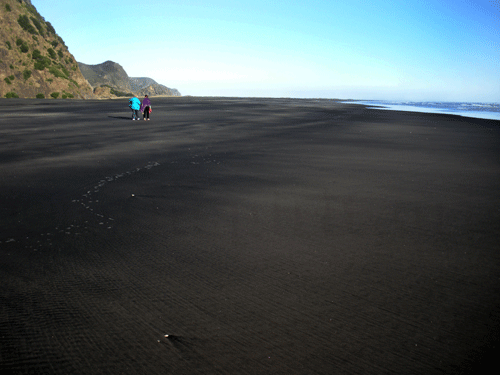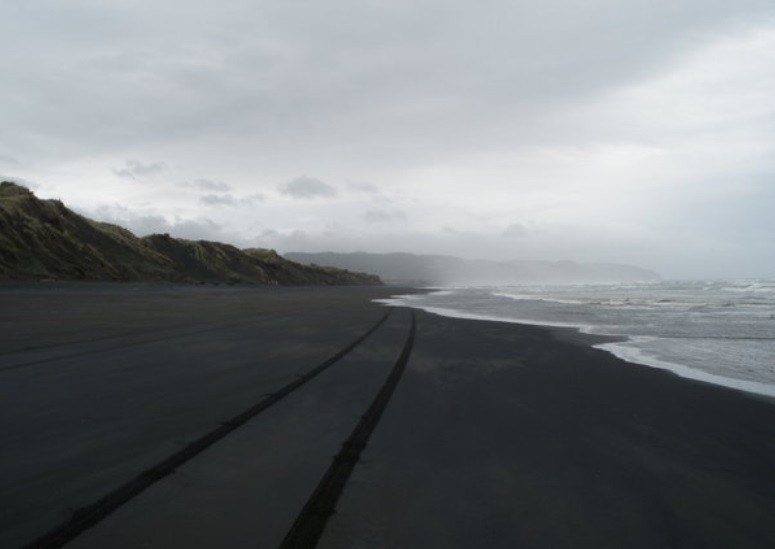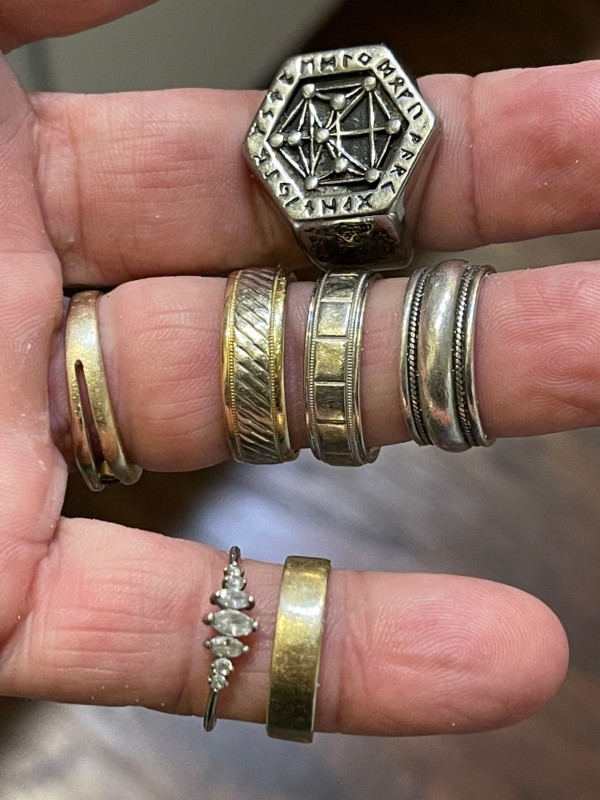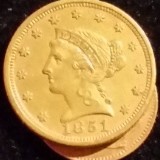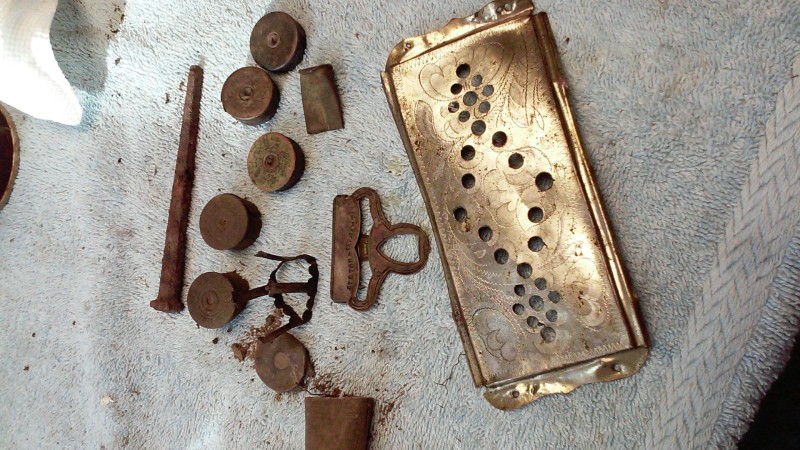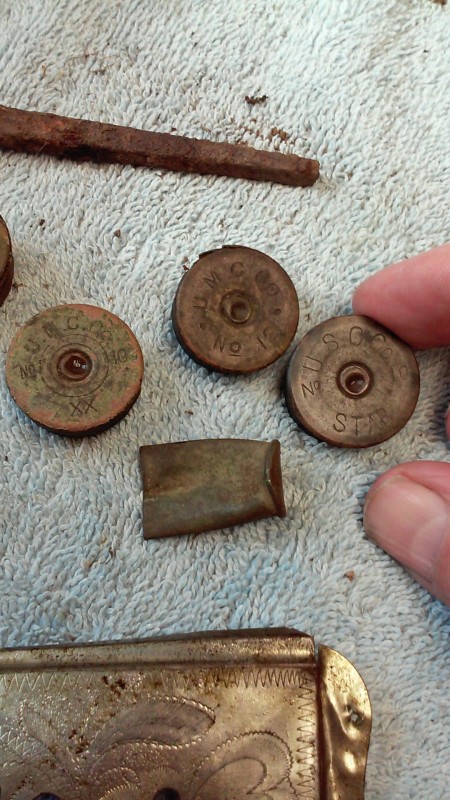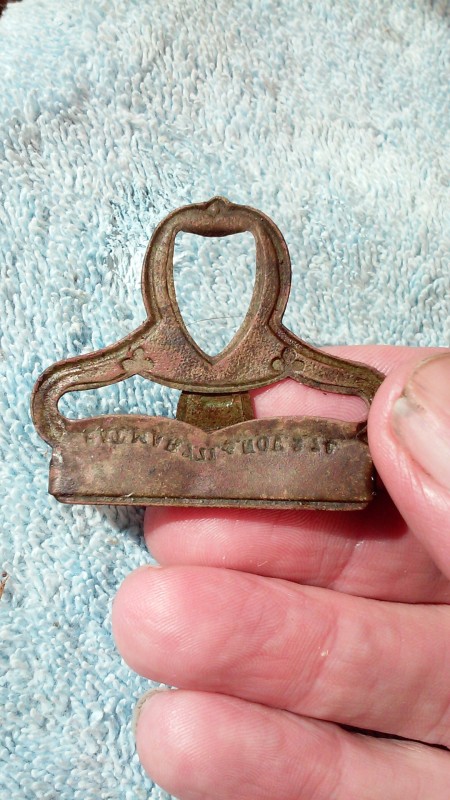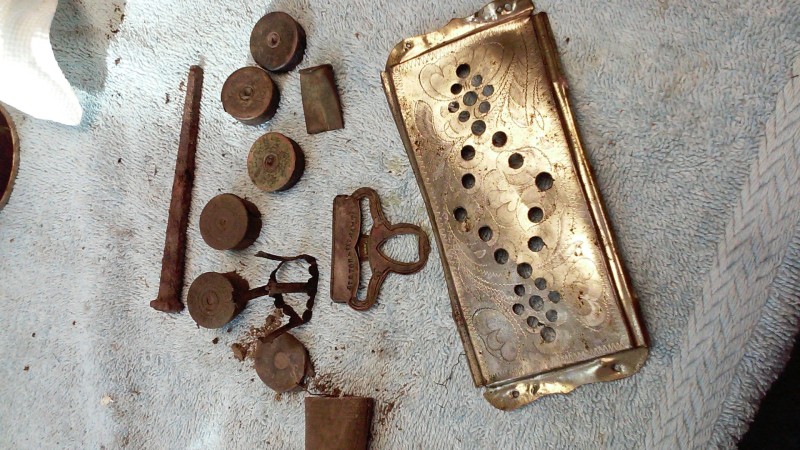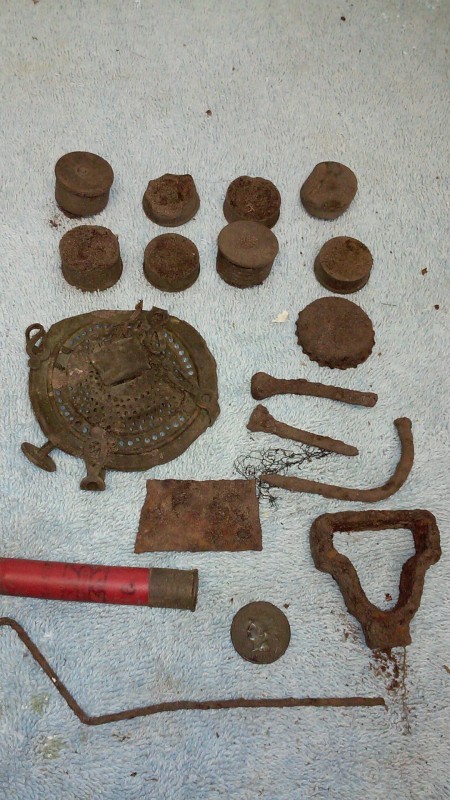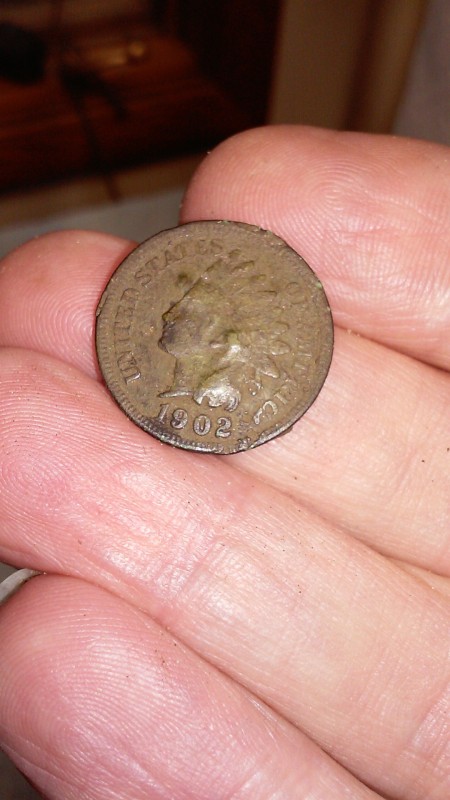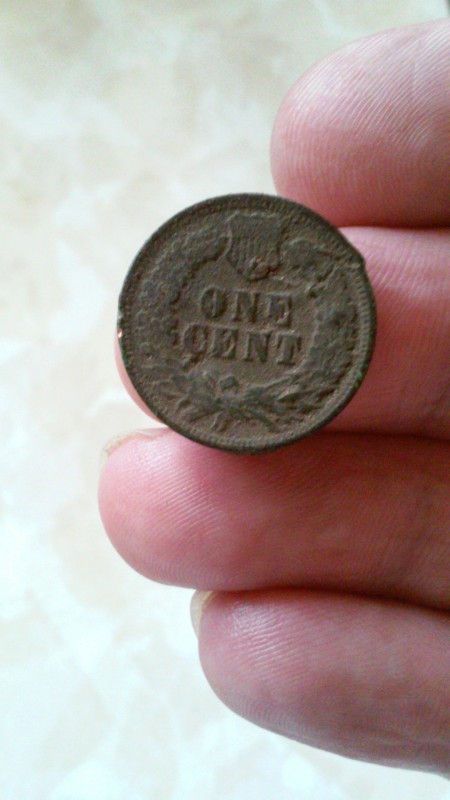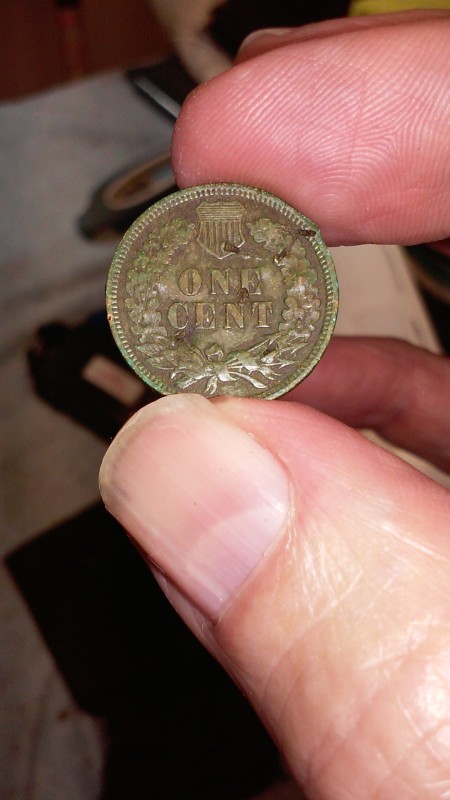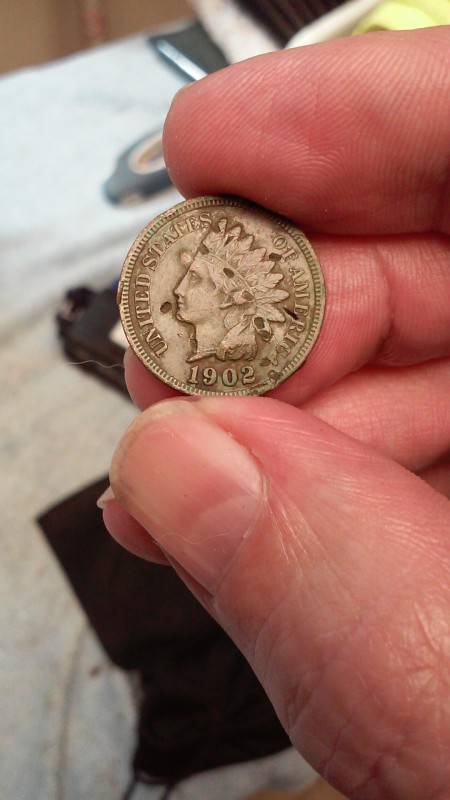Search the Community
Showing results for 'Tarsacci'.
-
I’d had keep Aaron’s videos on the Tarsacci that he had posted on this forum for everyone to view but now they say that the video is private . I don’t understand how it could have been posted on here and it shows different ones replying to it but video is gone now.. Aaron had made some great videos and everyone of them were all helpful. He was the only Tarsacci dealer that I know of that posted on here and had his own Tarsacci forum. We do have now Steve from Steve’s Rods came a dealer for the Tarsacci in December. Just maybe he will chime in sometime. Chuck
-
I love Rehoboth! Dewey Beach is pretty cool too! My Tarsacci, once I got it dialed in, is an absolute beast at the beach! It's so quiet. I sometimes need to pass my coil over my scoop to make sure its still working! Sounds like its treating you well too!
-
i am done with fones with dangling wires that get caught up
-
After weeks of heavily sanded in beaches , cold weather, rough water , everything turned around for a few days. 3 of us hunting together or more often apart, each have scored a gold ring, coins and junk jewelry. Of course the targets sing out when a patch of hard pack is exposed. But the back breaker is when you hear a whisper of a signal in soft sand. Numbers jumping around in the plus side. Today I had 5 such signals. So your fighting swells, target buried three scoops, holes filling in. It can be a work out. So out of these 5 killers, 2 quarters, 2 pennies and 1 disgusting rusty crown cap. Right now I'm sticking with the Standard coi!. Just handles better in swirling water, and I believe pinpoints a tad better. As far as depth , it got all I can stand. Now of course conditions change everyday, causing coil changes, settings, where to hunt. So I remember always feeling I'm being out gunned, not anymore.
-
I've had an interest in the Tarsacci for a while now, not enough of an interest to want one but more so an interest in what it's capable of. We have some of the worst or best depending on how you look at it black sand beaches in the World in New Zealand. I stumbled across a video of a person using their Tarsacci on a black sand beach near New Plymouth on the North Island. New Plymouth is right under Mount Taranaki which is an active volcano and is a source of the black sand on New Zealand's North Island's west coast beaches. Some information on the beaches from a government website Scientists like Dr Hume can trace the origins of sand from the different proportions of minerals it contains. The snowy white sands of Parengarenga in Northland, for instance, are formed from quartz; while the golden sands of Golden Bay get their colour from the weathered iron (iron oxide) in granite. The black sand found on the west coast of the North Island, is made of titanomagnetite – a mixture of titanium and iron. This soft material comes from Mount Taranaki and is swept up the coast as far as North Cape – a distance of about 400 km – ground into rounder and finer grains as it goes. “This is the biggest journey of sand anywhere in New Zealand, probably taking hundreds or thousands of years” says Dr Hume. “The sand is moved along this coastal highway by the prevailing waves that drive north from the southern ocean, stopped by headlands – ‘temporary carparks’ – along the way. The big sandpit at the end is Pandora Banks, a series of shoals off North Cape.” Waves do most of the work moving sand; tidal currents do very little. Wherever there’s white water, sand is being bounced along the seabed. As any surfer will know, the wave energy on the west coast is very high, so it winnows out the less dense (and lighter-coloured) quartz and feldspar sands, leaving the denser black ironsand behind. Sand can travel thousands of kilometres over time. But how long does it take to make sand from rock or shell? This depends on the type and hardness of rock (or shell), and how fast it’s broken down by weathering in the soil and during its transport by rivers to the sea. “Hard minerals like feldspar and quartz – the source of creamy coloured sand on many beaches north of Auckland and in the Bay of Plenty – take thousands of years to get ground down to sand. Shells are much softer and may only take tens or hundreds of years,” says Dr Hume. “On some beaches, shell is the primary source of sand,” says Dr Hume. “Overharvesting of pipis and cockles in harbours and estuaries can mean sand is in short supply.” On the other hand, the invasion of the hard-shelled Pacific oyster in the Manukau Harbour has converted some sandy beaches to shelly beaches, because Pacific oyster shells take longer to wear down than the shells of native shellfish. You can see there are many types of sand that give beaches around the country their characteristic appearances and feel. So next time you are on the beach, take a closer look at the sand and ponder its origins. Here is her video. The interesting thing about this detector is they claim they've made an 11x9 inch "NZ Coil", a coil specifically made for detecting on NZ's black sand beaches, this is it for sale at our local Tarsacci dealer. https://www.dredgenz.co.nz/product/11x9-inch-tarsacci-nz-coil/ While this New Plymouth beach she's at is a black sand beach, it's not one of the really black beaches like these in the photos below, both are further up the North Island from where she's detecting. I wonder how it goes on them. I'm yet to find a video of it being used on a really heavy black sand beach.
-

On The Beach. 5 Hunts With The Tar
Ridge Runner replied to Dancer's topic in Tarsacci Metal Detectors
JCR That Dancer is going at it with the machine that has served him well in the past and will do so here after . Of all the detectors I’ve sold the Tarsacci is the only one I regret selling. I will buy back into it when it comes out with something new. I’m not sure 🤔 just what that is. Chuck -

On The Beach. 5 Hunts With The Tar
Ridge Runner replied to Dancer's topic in Tarsacci Metal Detectors
Dancer it’s good to hear that you and the Tarsacci out there taking a licking but both keep on ticking. Looking forward to hearing back from you with some show and tell. Take care! Chuck -
If Dimitar did get his patents which were pending sorted does the XP D2 infringe on any of these ? it seems that the performance increases of the D2 over existing units is because of the separate salt balance that it has like the Tarsacci MDT8000 unit uses. Maybe Dimitar only got the patent (if still not pending) for single frequency separate salt balance (Mixed Domain?) and XP have filed for the multi frequency patent? or is Mixed Domain something else other than just separate salt balance ?
-
Hi, all! I just wanted to let everyone who may be interested know that I've now branched out a bit; in addition to my shaft-building, Steve's Detector Rods is now an official Tarsacci dealer. I purchased an MDT 8000 about 6 months ago, after meeting Dimitar at a detecting event, and spending a good bit of time speaking with him there, and later by phone. After he engaged me in a one-on-one demonstration of the unit, and the technology that powers it, it became obvious pretty quickly that the MDT 8000 breaks some "new ground," especially in terms of dealing with mineralized dirt. And sure enough, and after using the unit for awhile, I can confirm that the way it performs in my irony-red Oklahoma clay dirt is nothing short of impressive. With 12" coil attached, and after extensive testing both in my test garden, and in a "real-world" site that I'm uniquely and intimately familiar with, I can confidently confirm that I get an inch to inch-and-a-half of additional depth, as compared to any of the other units I've used/tested -- INCLUDING multiple iterations of Minelab FBS units, and the Multi-IQ platform found in the Equinox. While I'm still learning the unit, I feel that what it has proven capable of has earned it a permanent place in my detector line-up, and as such, I feel that I'm able to throw my support behind the machine in terms of willingness to become a dealer. Again, though not yet an "expert" user by any stretch, I feel I know enough about it that I'm now in a place where I can assist any customer who is interested in a possible purchase, as well as help out with post-sale questions or advice on set-up or operation. My website is not yet up-to-date to reflect my partnership with Tarsacci, but I'm happy to offer any information needed, along with pricing on the various packages, to anyone who may be interested. Last but not least, I build aftermarket shafts for the MDT 8000, and I'm even working with Dimitar (the company owner/design engineer) to be able to offer a possible "package deal," where the unit could be sent with one of my custom two-piece lower shafts, as opposed to the factory shaft. Now, I will honestly say that the MDT 8000's stock carbon-fiber shaft is as high-quality of a shaft as I've ever seen on a machine. However, one thing that is not offered by Tarsacci is a "tall-man" lower rod. And so, for those needing a bit of extra length, I can offer that, via my two-piece lower shaft setup -- in the same carbon-fiber pattern and appearance as the stock shaft. In addition, my shaft is substantially smaller in diameter than the stock shaft, which is an advantage for folks using their unit in the water -- as the thinner diameter substantially reduces "hydrodynamic drag," thus requiring less effort when swinging the shaft underwater. Anyway, I just wanted to let everyone know that I'm now an official dealer, and would be glad to talk all things "Tarsacci" with anyone who may be interested. Just send me an email, to "steve@stevesdetectorrods.com," and I'll be glad to assist. Thanks! Steve www.stevesdetectorrods.com www.facebook.com/stevesdetectorrods email: steve@stevesdetectorrods.com Thanks! Steve
-
3 hunters own 4 of this biggest seller. We all have older back ups. Sometimes If one of us comes up with a feint signal, we'll call the nearest over to see what they think. Early on they rarely could hear my target. I hunt in AM, they were in disc. After switching to AM they all could hear something. None of the machines vdi's could lock on the deep target. But even in AM , there was enough there for me to at least take a scoop to see. Most of the time the target ends up being a deep corroded penny, sometimes a dime. And sometimes junk. Says something for hunting in AM when you can. Couple times , unrecovered due to waves. The most successful of the four hunters are the two youngest. Their tough being in 50's and 60's. They can hunt deeper and much longer. Me and another are in our early 70's and it's 4 hrs tops. The youngest who owns two of the big sellers had both of them flood out and had to be repaired. We all have scored on Gold but the two youngers finding the most. So us oldtimers just gotta get that coil over the target.
-
The snow is piling up in Western Pennsylvania and I am dreaming of my next beach trip. I really wish I was in New England tonight getting ready to hit the beach on Tuesday and Wednesday. The following picture are the rings that I found on my last week of April trip to the beach. The top ring is a stainless steel ring and the markings are the Viking alphabet. Middle rings right to left are .925 silver ring, 14k gold ring and a 14k gold ring. Bottom rings right to left are 14k gold band and a .925 silver ring with fake stones. Hopefully the beach will be fantastic for you guys next week and I hope you kill it.
-
These spectacular old finds are at "Today's Finds" forum at Finds Forums, 3rd post down as of tonight. Rafael has acquired the best detectors over the years and has shown many of his finds here, usually under the particular detector forum. We're talkin' OLD Spanish.
-
Minelab Vanquish Successor Predictions
phrunt replied to Detectornado's topic in Minelab Metal Detectors
I think soil conditions and needing a ground balance on a multi-IQ unit are so limited in the number of people it matters for that they just consider it a non-issue for an entry level type machine. To those detector users in those conditions they need a different detector and the local dealers would tell them that, just like the people on the North Island of NZ with the black sand beaches, they are aware they're in difficult ground and if not the shops they're buying from instruct them so, they are told they need to spent the big bucks to handle their conditions and nothing less than a GPX 5000 or Tarsacci (which hasn't worked out well for anyone that I've seen) will work so because of their tough conditions they just have to buy something higher priced to handle it. The Ace series are likely one of the most sold detectors on the planet, they can't ground balance and wouldn't work well in these tough conditions either but it didn't stop them selling like crazy and doing very well for people around the world. The right price, the right marketing and for most people the right performance for the price to make them a good choice. The Vanquish jumped onboard with this providing a multi-IQ machine much like the Ace but with better performance at the beach and better Target ID's. To someone that owns an Ace 400 buying the Vanquish would be a great stop upwards to something better in the same places they've been hunting and they could expand their hunting to wet sand at the beach and get great performance too. -
Down To Three Detectors
phrunt replied to Steve Herschbach's topic in Metal Detector Advice & Comparisons
I can't bring myself to thin my herd, I got rid of the QED but that was out of principal more so than I wanted to get rid of a detector, I also got rid of my GPX 4500 but mainly because a guy I know wanted to detect black sand beaches here and he bought a Tarsacci with their infamous NZ black sand coil they say was made for NZ's black sand beaches and it sucked basically and wasn't suitable and I knew my GPX handled it with the 11" DD so I moved it onto him seeing I have a 5000 anyway and was unlikely to use it again. So instead, I just have gear I use, and gear I collect 😉 And my herd is as follows in order of amount of use Equinox 800 (tops the list as I use for gold and coins) GPZ 7000 CTX 3030 GPX 6000 Garrett 24k Manticore Ace 300i My other detectors are just decorations. And my pinpointers that get used in order of use hours are Garrett AT Sphinx 03 (too new to clock up enough hours) XP-Mi4 Others are just decorations.- 45 replies
-
- dfx vx3 v3i
- minelab equinox
-
(and 1 more)
Tagged with:
-
On a North Carolina, South Carolina or Florida beach in the water, what is the best program and the best coil to use for the Deus 2? Can you get away with using Beach Sensitive with a small coil or are you better off with a large coil in the Dive Program? I would like to compare the Deus 2 and the Tarsacci in the water and would greatly appreciate any tips or settings on the Deus 2. Thank you in advance for sharing.
-
I just Subscribed to your Channel and watched the first "intro" video. I think it will be very helpful to many and fun too. Even if someone doesn't get a Nexus or use an Analog machine, there is a lot that can be learned from them and your experience will show that. I have been, and still really am in the same position with the Tarsacci MDT 8000. Very powerful unit, but also a very different animal. My Vista X is a hybrid Analog machine and it is pretty amazing in heavy iron and minerals. What these two detectors have that is missing from the more popular detectors is a true All Metal channel. Mixed mode is also almost unheard of today. The Nexus has both plus other refinements. A very interesting machine. Looking forward to the journey with you. Where & what kind of ground conditions do you hunt? I'm digging relics in East Texas red dirt that sticks to a magnet.
-
A BIG CONGRATS to Lain in the UK who scored BIG TIME w his MDT……. https://forums.tarsaccisales.com/forum/1/ancient-tarsacci-gold-uk HH! Aaron
-
Short Answer, Chuck: Yes it does apply from one VLF to another and I would add from one detecting objective or environment to another. It can be counterproductive if you blindly apply “knowledge” gained from one VLF detector to another VLF detector without thinking about the inherent differences in the way features are implemented between VLF detectors or their different behaviors, strengths, and weaknesses. Similarly, it can be counterproductive to have the mindset that one’s approach and knowledge gained by specializing in one type of detecting (e.g., relic hunting) would translate wholesale and directly to beach detecting or gold prospecting. Relatively mundane techniques such as the methods and tools used to recover targets varies greatly. If you don’t know how to use a heavy duty water scoop in heavy surf you will have little success even if you have nailed the detector language telling you there is a gold ring under your coil. The Nox to Manticore sensitivity and recovery settings “disconnect” is now becoming more obvious, but it definitely existed with Deus and Deus 2. A lot of Deus “unlearning” was required for me to truly unlock Deus 2. Furthermore, the way you use a single detector model varies greatly depending on your detecting objective and environmental conditions. As an example, one may be a wizard with the Nox at beach detecting or coin shooting but may struggle mightily relic detecting in hot ground or gold prospecting with the Nox because even though the Nox is capable of tackling all those things the setups and techniques used are completely different, such that if you solely use your beach or coin shooting knowledge and fail to recognize that the environmental or target type differences require a completely different setup or technique, the Nox will “appear” to you to be ill suited to the task, when it is your “old” or non-applicable experience and knowledge holding you back. Individual “common” features such as ground balance, noise cancel, sensitivity, discrimination, tones, recovery speed adjustments, frequencies, pinpointing, and “modes” behave very differently with respect to these parameters from one VLF to another, even within the same brand or even model family, and sometimes, in the case of Deus 2 and Manticore, within the same detector, itself. On Deus 2 there are basically three groups of modes which behave differently from the others. The terrestrial “discrimination” modes (General, Sensitive, High Conductor, and Mono) are pretty different from the three Beach/Dive discrimination modes, and the “non-discrimination” Gold Field and Relic modes are vastly different from either of the other two “discrimination mode” groups in terms of behavior, tone, and available settings. Even the notion of “All Metal” varies from one detector to another. In one case it can mean simply removing all discrimination, in another it is the true raw unprocessed IB signal (motion or non-motion), in another it is a specialized mode that processes signals different than the “discrimination” modes (Deus and Deus 2), and in others it disc and all metal (or motion and no motion) can be implemented simultaneously (e.g., Tarsacci) to simultaneously provide mixed audio to the detectorist. I tend to learn each detector’s language, quirks, features, and weaknesses individually, uniquely but I don’t consider this “diversity” in detector-to-detector behavior a hindrance, but rather it is the essence of what I mean when I say one detector “compliments” another. To this point, my experience with a Deus detector that had multiple frequency settings multiple reactivity/recovery settings, and multple search modes made Nox less intimidating to me, so in that sense the prior knowledge and experience using a versatile "Swiss Army knife" type of detector was helpful in getting a running start with the Nox, but the Nox also had its own language, which I had to force myself tl learn and avoid the temptation to revert back to my comfort zone with the Deus. So, of course there is a certain degree of knowledge and technique “crossover”, but if I have really learned a detector well, then my brain and muscle memory actually take over to switch my “operator’s mode” over consistent with the detector I am swinging. My detector setup, settings and techniques differ depending on which detector I’m using even if my detecting objectives haven’t changed because the detectors themselves have different behaviors and different strengths and weaknesses. Even when using a single detector, I often “interrogate” iffy targets by hitting them with different modes or even different setups of the same mode (by varying a single or multiple parameters such as frequency, recovery, disc, or tone). This used to be accomplished in a less straight forward manner by hitting a site with two or more detectors that operated at different frequencies or that had different recovery speeds or discrimination behaviors. When switchable single frequency, simultaneous multifrequency (SMF) , and finally the Nox with its combination of multiple SMF modes and multiple switchable single frequencies came along, you now could hit a site just a few times with the same detector but with different mode setups and accomplish that same feat that you accomplished with multiple detectors and multiple passes through a site. Bottom line is that there are general experiences and knowledge and basic setups and techniques that you can carry over from one detector to the next or one detecting objective or environment to the next, but there is also a greater amount of specialization and “unlearning” required, as well (which I refer to collectively as “evolving”). Especially as the detectors themselves evolve into more capable, versatile, and complex machines.
-
This video may answer a few questions for those interested in the TARSACCI and even for those who already own one…. HH! Aaron
-
I am in a spot i have gone over at least 5 times with the ORX, and the ground went silent. Dont think I dont like the ORX, when i go to the park and sports field you cant beat it .But like i say when i got to the site today I took some advice from a guy who said put the Disc at between 27-and 30 so i set it at 29 and i just was amazed that the ground just lit up . things at 9 inches no problem good signals and deeper . my settings used are . 6.4 khz in mix mode, gain of 7 and 0 threshold, black sand mode on and salt balance at 43, and this machine just starts devouring the ground , I spent my stimulus money on it and dont regret doing so as its made in U,S,A and it went to help an American citizen. the thing with holes in it was 18 inches deep and i left more in the hole. i was tired of digging deep holes for the day . and i forgot to say i was not digging as many nail false s. so what that guy said must be working
-
I am in a spot i have gone over at least 5 times with the ORX, and the ground went silent. Dont think I dont like the ORX, when i go to the park and sports field you cant beat it .But like i say when i got to the site today I took some advice from a guy who said put the Disc at between 27-and 30 so i set it at 29 and i just was amazed that the ground just lit up . things at 9 inches no problem good signals and deeper . my settings used are . 6.4 khz in mix mode, gain of 7 and 0 threshold, black sand mode on and salt balance at 43, and this machine just starts devouring the ground , I spent my stimulus money on it and dont regret doing so as its made in U,S,A and it went to help an American citizen. the thing with holes in it was 18 inches deep and i left more in the hole. i was tired of digging deep holes for the day . and i forgot to say i was not digging as many nail false s. so what that guy said must be working
-
Got back to the old homestead i have been hunting, and by far the thing i find the most of is shot gun shells, in fact i found a cash of of them buried about 9" deep , I think a red squirrel buried them must have been 15 of them , but today I went over the same spot the ORX went over and just kept finding targets, . I keep digging some nails, because i find so few good targets like silver coins i really do not know the difference from a nail false, and a silver coin so i have dug my share of rug pullers, but the Indian did have a better sound and higher numbers 14-17 and i found it by rechecking a hole the ORX found one in I am using 6.5 khz and 7 gain and 0 threshold and it will hit with a good signal in air a dime at 11 inches so its got some power . the Indian looks like someone went after it with a sharp punch of some kind, otherwise it was in extra fine condition
-
Has The Tarsacci Passed Away?
Yatahaze323 replied to Ridge Runner's topic in Tarsacci Metal Detectors
Perhaps he's waiting for some patents to be approved before releasing anything new. I don't have the original tarsacci but the tech is very interesting and I'd be interested in the 2nd gen tarsacci. -

Has The Tarsacci Passed Away?
Ridge Runner replied to Ridge Runner's topic in Tarsacci Metal Detectors
Well the heavens open up and at Sunday night I heard from the man . The message had a heading of small coil that I’d sent him but not one word was said about a small coil in his reply back to me. The only thing he said was some great things was coming but wanted to be sure it was protected before a new unit hit the market. Not a word on a time line for this to come about. So the Tarsacci coming off the line today is the same as the one a year ago. It’s just too many new detectors out now at a lesser price to be sitting on your hands and not offering something new. Chuck


